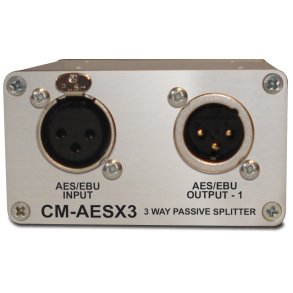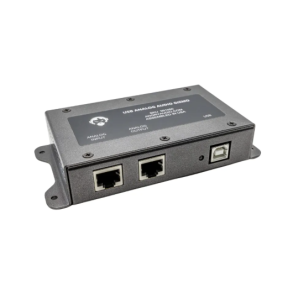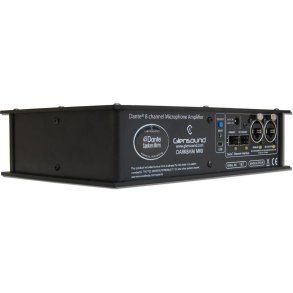Glensound Cub Audio Interface for Smartphones & PC
- Glensound CUB Interface: Apple iPhone USB audio interface uses the Apple camera kit adaptor lead. 30 pin and lightning connectors included.
- A type USB plug flush mounted on top panel for secure connections of Apple devices
- Glensound Magic Pad grips phone on top panel to ensure it stays secure. Also includes bungee straps for securing multiple size phones
- Side mounted mini USB socket for connection to other smart phones, notepads or PCs
Mixer:
- 2 channel mixer with mic/line/48vphantom inputs
- Inputs have Glensound Referee compressor/limiter system
- Inputs can be switched to output 1, 2 or both
- 2 x master outputs on XLR
- 2 channel audio input and output interface via USB
- 2 x headphone outputs on 6.35mm jack sockets
- Headphone monitoring with 3 sources (local inputs MIX, USB audio 1, USB audio 2
- Headphone monitoring inputs have left/both/right switching
- Two line outputs on balanced XLR
- Audio routing configurable via USB
- 4 x AA batteries or external DC power
Specs:
DSP Core
Microphone Amplifiers with low noise & extended headroom
The CUB portable audio broadcast unit was designed to be very simple to operate for non-technical users yet have very sophisticated features available to engineers hidden beneath the surface. To this end the CUB is built around a new and highly innovative digital architecture that provides ground breaking audio performance for the discerning engineer.
It is common for high end broadcast audio products to use a digital signal processor (DSP) for complex audio tasks within a product however very few devices use these in battery powered portable equipment due to the power consumption of the devices. The CUB solves this by implementing a combination of the latest low current DSP technology and the latest battery technology.
With all digital audio products the initial microphone amplifier is an analogue device whose output is fed into an analogue to digital converter (ADC) chip. The ADC chips have a specific noise floor and applying too much gain in the digital signal after the ADC will bring the noise floor up to an extent that it will be heard. The ADC chips also have a maximum input level and setting the output of the mic amp too high (normally done to keep the noise floor low) will reduce the amount of headroom available. Headroom is the amount of extra input level available on top of the line up of the mic amp and it is very important particularly in commentary systems as when the commentator gets excited the output level of their mic will rise a lot and if the audio electronics does not have enough headroom the audio will clip.
The traditional approach to get the best performance out of the mic amp and ADC when only a single gain/fader control is available to the user is to pick an optimal mic amp gain that leaves as much headroom as possible while leaving the noise floor as low as possible. This is far from ideal as the final equipment either has too much noise or not enough headroom.
For the CUB we spent a lot of time developing a very clever mic amp and ADC arrangement that solves the issues of headroom and noise. The system provides a constant 30dB of headroom (enough for even the most excited of commentators) while also providing a constantly variable front end gain (thus reducing noise). This is done by utilising the latest variable gain microphone amplifier which can change its gain in approximately 3dB steps and syncing its 3dB gain changes with 3dB steps within the DSP. The gain changing between the
DSP and mic amp is very accurately synced and the DSP changes its gain settings at the exact point that the first audio sample arrives from the mic amp after it has changed its gain thus keeping the output level perfect.
Although the syncing of the mic amp and DSP is in 3dB steps the DSP provides fully adjustable gain control in minute steps so there are no horrible jumps as the gain control is operated. This all may sound very simple even logical however the knowhow and technology to make this work seamlessly is really advanced and we are the first broadcast manufacture to be able to offer this advanced technology.
Compressors both RMS & Peak
USB digital audio
Headphone Amps which drive both Low & High Impedances without killing the battery
Broadcast audio mic amps (especially commentary ones) need compressors to keep the output level from distorting or getting too loud when there are sudden spikes on the input. The compressors within the CUB are controlled within the DSP. There is one compressor chain for each audio input of the unit thus eliminating the issues caused by a high peak on one input reducing the correct level on another. The compressors used within the system are a combination of a look ahead peak compressor whose job it is to catch the really fast transients that are missed by the slower but much more natural sounding RMS compressor. The combination of the 2 compressors with the peak compressor only being used to catch thevery fast peaks and the RMS compressor for 'normal' compressing, offers further technical advances on the standard broadcast RMS only compressors which sound great but fail to catch the fast peaks.
Because the compressors are within the DSP it is possible to provide a specific curve or compression style tailored to meet a customers' exact requirement, please email for more details. There are many USB audio interface chipsets on the market and they vary in quality drastically with most of the chipsets found in the domestic USB audio interfaces being far below the standards expected by broadcasters. After trialling many chips we finally selected a chipset with a combination of great audio performance, ease of pc connectivity and advanced features for the discerning engineer. As standard we have set the USB audio interface to work as class 1 fixed at 48kHz 24 bit, this has been done specifically to make connection to a windows computer seamless and hassle free for users. For the engineer or audiophile there are more possible USB settings available. Class 1 audio drivers are built into windows and do not need to be installed and as such are great because they just work, however windows class 1 drivers add delay, to improve this the firmware that we have written for the USB audio chipset also works with ASIO drivers. ASIO drivers bypass the standard windows drivers and provide much lower delay into & out of the pc. We do not supply our own Glensound ASIO driver but our firmware was written to work with the free and widely available ASIO 4 ALL drivers.
As well as being able to run with ASIO drivers it is possible to set our USB interface chipset to work as USB audio class 2. USB audio class 2 is supported natively in Apple products and the higher bandwidths supported by class 2 can sometimes be advantageous, however currently windows pcs need specific class 2 drivers (which we do not supply).
Historically broadcasters have used headphones with high impedances (200 Ohms +) however over the last decade there has been a shift to more broadcasters using lower impedance headphones of 32 - 80 Ohms. For outside broadcast equipment it is important to design the headphone amplifiers to have enough drive to provide enough level into high impedance headphones, the problem is that when low impedance headphones are used on these circuits they draw a lot of current and greatly reduce the battery life of portable equipment.
Recently our Chief Design Engineer Paul Grant, spent a long time coming up with some ingenious circuits to solve this problem. I won't tell you how they work (as no other broadcast manufacturers have been able to come up with a solution to this problem and we don't want them pinching our ideas (again)!) but needless to say with the CUB you can use high or low impedance headphones and have the same long battery life when
using either type.
As the internal architecture of the CUB is digital with its heart being a sophisticated DSP it is possible to change the routing of the audio circuits. Out the box the units will just work effortlessly for the less technically able users in a traditional single program mode. However an engineer will be able to change the audio routing by dropping a different setup file via the USB port into the internal filing system. Initially there will be setups supplied for panned centre stereo working (default), panned left/ right stereo working, mono program and mono talkback and 2 separate mono programs. Other configurations will be able to be custom supplied by Glensound and if there is enough interest our software engineers will provide in the future a user configurable application to set up the routing.
As well as the sophisticated mic amplifiers and ADC circuits the audio input circuits also provide a number of other useful & innovative features. The most innovative is the ability of the input circuits to change their input impedance to the correct level. Mic input circuits generally need an impedance of 2kOhms while line input circuits need a high impedance ideally 100kOhms. The problem is that when a single input XLR is used for both mic inputs and line inputs the input impedance of the circuit cannot be right for both types and most manufacturers end up with slightly low mic impedances and very low line impedances. Our design engineers have come up with a great solution that allows the correct input impedances to be presented for both mic and line inputs even though there is only 1 physical XLR input for both input types. A very useful side effect of this input technology is that it also provides a much better than normal common mode rejection.
Another issue that affects input impedances is the phantom power supply, the normal way of supplying phantom power to a mic input is to have a pair of resistors connected to pins 2 & 3 of the input and the other end of these resistors connected to the internal phantom power supply volts. Most manufacturers turn the volts on/ off to the top of the resistors when turning phantom power on/ off, this leaves the resistors attached to the input and alters the input impedance when the phantom power is not on. Using similar technology to our new input impedance switching circuits our engineers can now completely remove the phantom power resistors when not in use.
Powerful DSP driven audio routing
Intelligent channel gain, input impedance & compressor setup
Our intelligent channel gain circuits means that the initial microphone line up gain is different for dynamic and condenser microphones. This is because a condenser microphone (one that requires phantom power) has a much higher output level than a dynamic microphone (one that doesn't use phantom power). When the user turns the phantom power on/off our initial input lineup gains get set automatically to provide the best performance for both types of mics.
Compressors automatically turn off for line inputs. It may only be a minor point but if an input is selected to be line level then the system automatically switches the compressor circuits off for that input. This is because line inputs will be coming from a controlled output source and it is undesirable to have compressors affecting the level of the audio (that presumably someone has already taken time and effort into ensuring that it is at the correct level).
Updating a devices firmware and software via USB isn't exactly an innovation as it is pretty much a perquisite on domestic products made for the mass market. However it is a detail that is often glossed over by broadcast manufacturers and as the minimum expected life cycle of our equipment is 20 years it is likely that a few updates will be released during this time and this feature will be very useful.
Battery Life
Not all batteries are equal in the amount of energy that they store. In fact they vary hugely. A battery that does not store much energy will of course not keep the CUB running as long as one that stores a lot of energy.
Traditionally Alkaline batteries have always been the choice of Broadcasters, and we still recommend them over most other battery types, however now they are commonly available Lithium Ion batteries are a very good choice and generally far exceed alkaline batteries.
In a test which involved running 1 pair of high impedance headphones at high volume, 1 mic input & 1 line input with programme audio on the line input Procell Alkaline batteries lasted 3 hours 3 minutes & Energizer Ultimate Lithium batteries lasted 7 hours 45 minutes.
Dimensions
185mm wide x 125m deep x 60mm high
A very good website providing a huge range of comparisons between different brands of batteries and well worth a visit is: www.batteryshowdown.com
Compatibility:
Supports USB Audio from the following hosts:
- PC
- Mac
- 30pin Apple (iAP1)
- Lightning Apple (iAP2)
Soon to follow:
Supported Phone Lists:
This list is not definitive - it is just what has been confirmed and tested. As users have experiences with different phones and update us we will amend the list accordingly. Initially we had shown certain Android models as compatible. It has been found however, that there are inconsistencies, so at the moment, Andoid phones are not recommended for use with the Cub.




